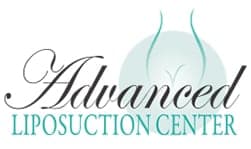Hermitage plastic surgeons at Advanced Liposuction Center know that Black Friday signals the start of the busiest shopping time of the year and that means we’ll be seeing a lot more patients who want to get rid of their varicose veins permanently. While support stockings and taking breaks and elevating your legs may help you get through one shopping trip, the heavy, aching, tired feeling in legs with varicose veins will only get worse as the holiday season progresses. The only way to get permanent relief is to address the underlying problem.
What Are Varicose Veins?
Varicose veins, commonly known as varicosities, are bulging, twisting veins. Although they are less prevalent than spider veins, they are larger.
Spider veins develop as a result of damaged veins, whereas varicose veins develop as a result of too much pressure on the legs. They exclusively appear on legs and have a worse appearance than spider veins.
People mainly treat them for cosmetic reasons, but it’s critical to get rid of them as soon as possible because they can cause blood clots or bleeding if left untreated for long periods of time. Even a small cut on them can cause a lot of blood loss.
You should also keep in mind that they are more painful than spider veins.
Symptoms Of Varicose Veins
Varicose veins can manifest a variety of symptoms, or they might occasionally go unnoticed. Typical signs include:
- Legs that hurt and are uncomfortable
swelling of the ankles and feet - Scorching or stabbing muscular cramps, especially at night
- Itching skin around the affected area, and coloring of the skin
- Feeling heavy or worn out in the legs
Where Do Varicose Veins Come From?
Unwanted blood vessels in the form of spider veins and varicose veins can have several causes, such as:
- Aging
- Genetic predisposition
- Pregnancy
- Hormone replacement therapy
- Occupations that require long periods of sitting or standing
Varicose veins have the potential to form blood clots, making them a medical issue as well as a cosmetic one.
Are there different types of varicose veins?
Yes, there are different types of varicose veins, which can vary in size, appearance, and location. Some common types include:
- Trunk Varicose Veins: These are large, swollen veins that typically appear on the legs and can be seen bulging under the skin.
- Reticular Varicose Veins: These are smaller, bluish veins that often appear closer to the surface of the skin and may form a network or web-like pattern.
- Telangiectasia (Spider Veins): These are very small, thin veins that appear close to the surface of the skin and often look like a spider web or tree branch.
Can varicose veins cause itching or burning sensations in the legs?
Yes, varicose veins can cause itching or burning sensations in the legs, especially when they are large or if there is underlying inflammation. These symptoms can occur due to a variety of reasons, including:
- Poor Circulation: Varicose veins can lead to poor circulation in the legs, which can cause discomfort and itching.
- Skin Irritation: The skin around varicose veins can become irritated due to the pooling of blood and increased pressure in the veins.
- Inflammation: Varicose veins can be associated with inflammation of the surrounding tissues, which can cause itching and burning sensations.
Can varicose veins cause ulcers?
Yes, varicose veins can cause ulcers, known as venous ulcers or stasis ulcers, particularly in the lower legs. These ulcers are usually the result of long-term venous insufficiency, where the valves in the veins are damaged, leading to pooling of blood in the veins and increased pressure in the lower legs.
The increased pressure and pooling of blood can cause the skin to become fragile and eventually break down, leading to the formation of an ulcer. Venous ulcers are typically shallow, painful, and can be slow to heal.
How Sclerotherapy Can Help
Sclerotherapy is a non-invasive procedure used to treat problematic veins. A series of small injections of a painless sclerosant can cause the vein to shrink and eventually close. This allows the body to naturally redirect the flow of blood to healthy veins and the varicose vein will eventually disappear. Usually, two to five treatments will produce long-lasting results. Discomfort is very minimal, and treatments take less than 30 minutes. Most patients are able to return to their normal activities within a few days. Other advantages of this procedure over other varicose vein treatments include:
- No scarring
- Reduced likelihood of staining
- Fewer allergic reactions
Sclerotherapy can be used to treat veins on the legs, arms, chest, hands and face. If you would like to find out if sclerotherapy is your answer to unsightly and uncomfortable varicose veins, set up a free consultation with one of our expert cosmetic surgeons. Contact us today at: 724-683-7581 to schedule your appointment.
